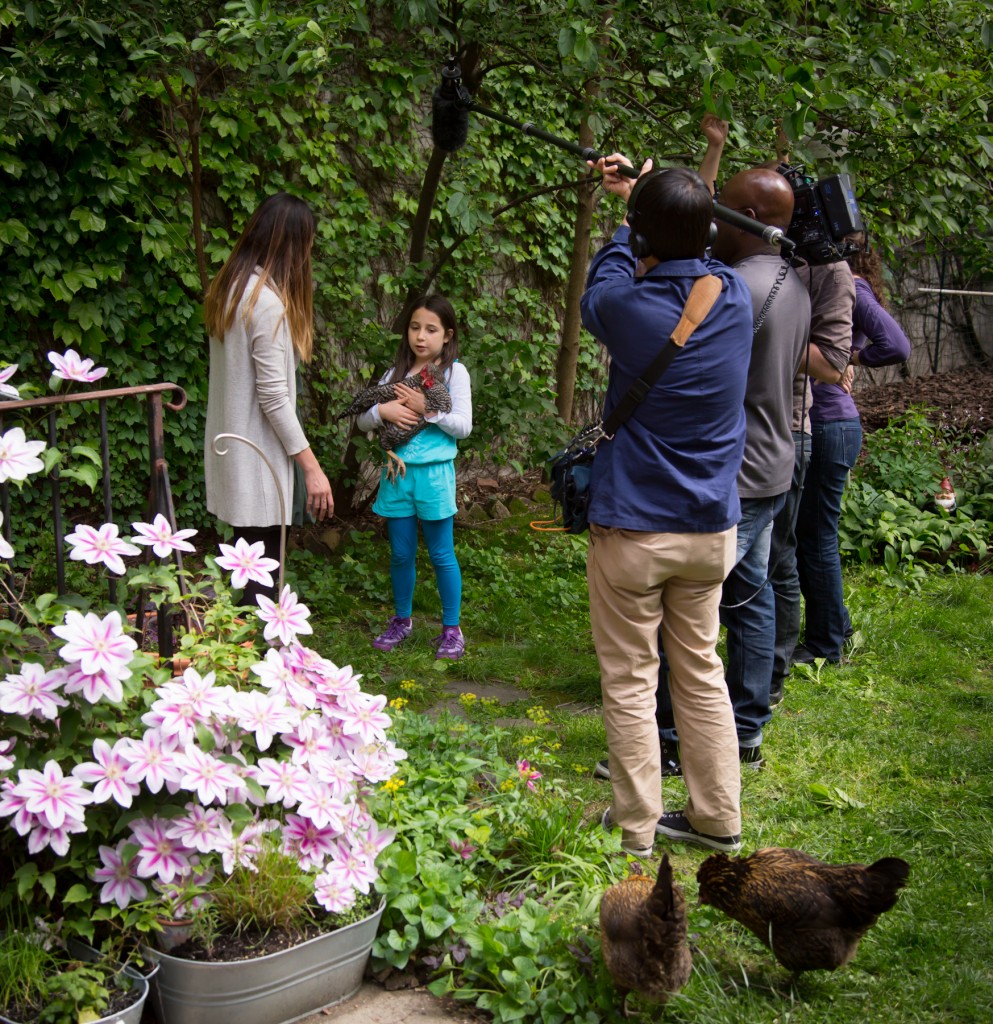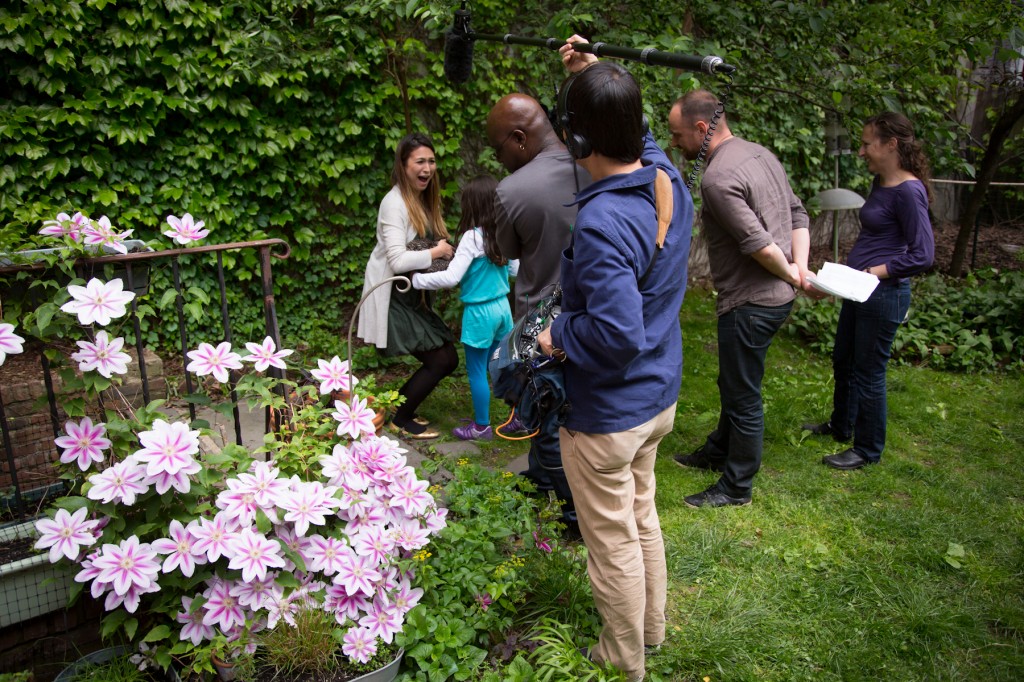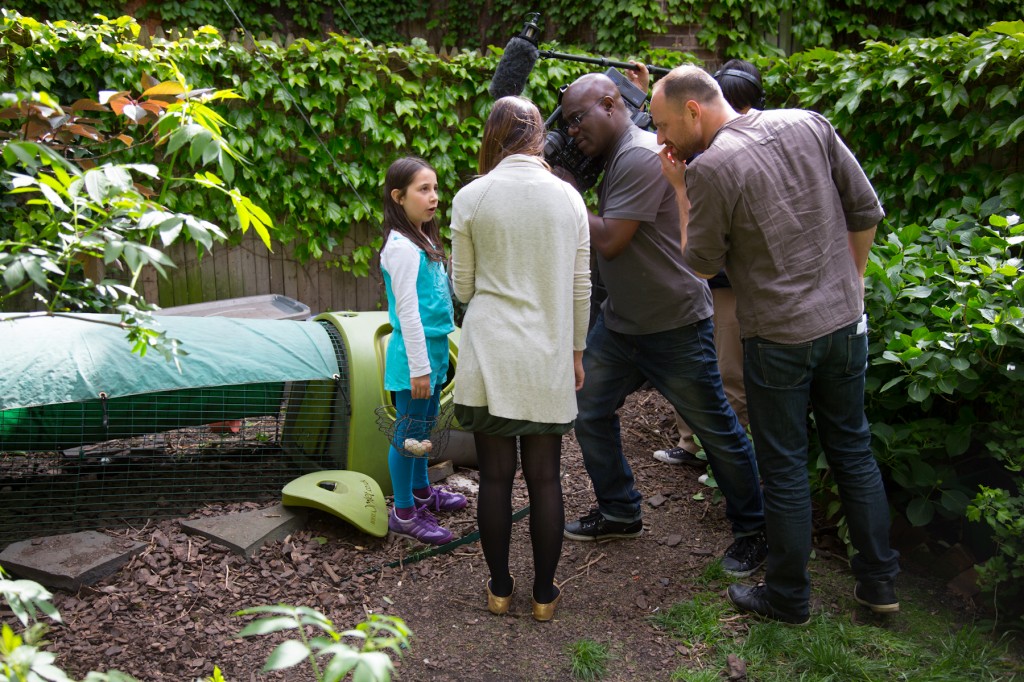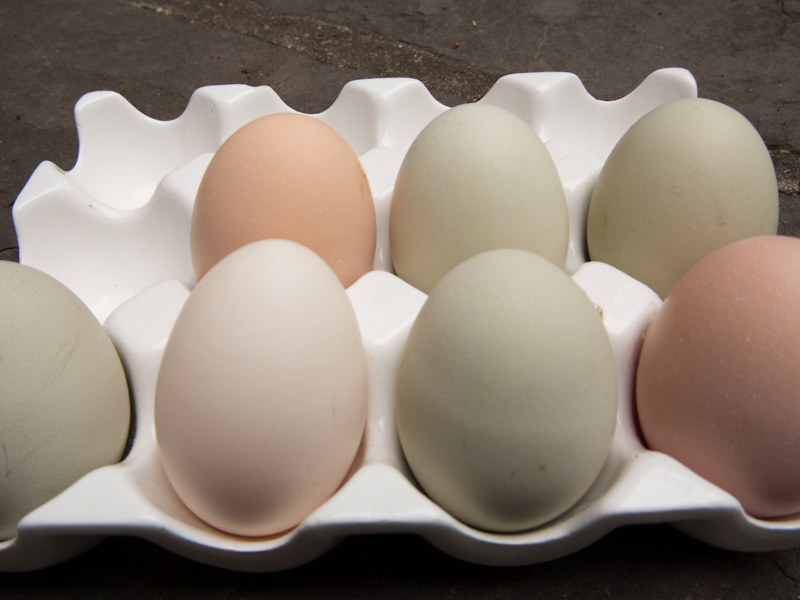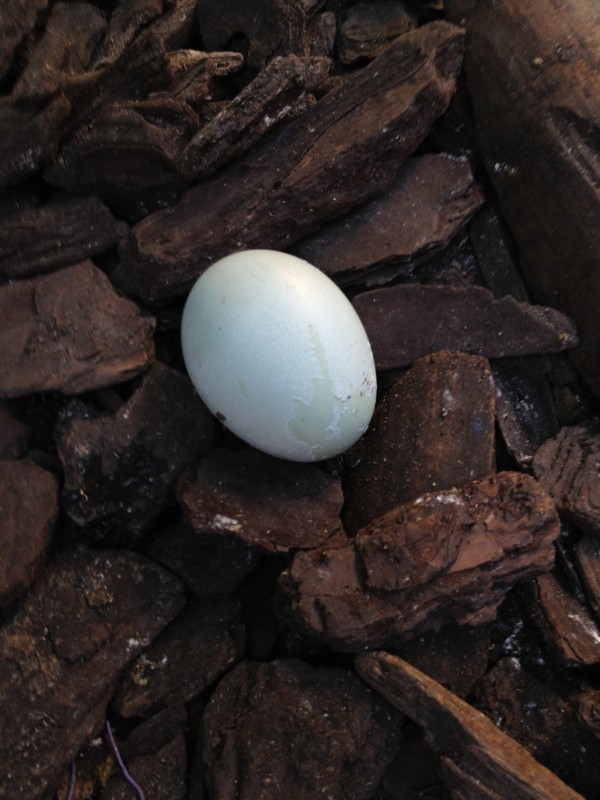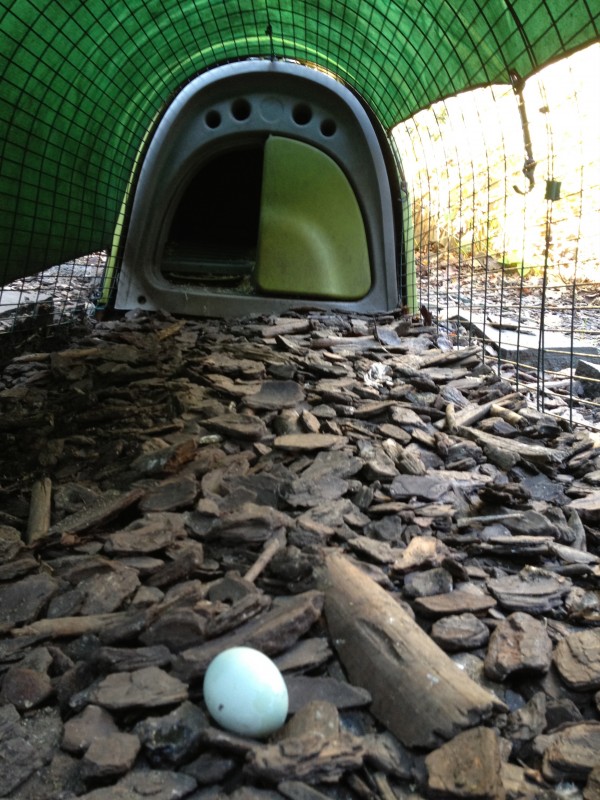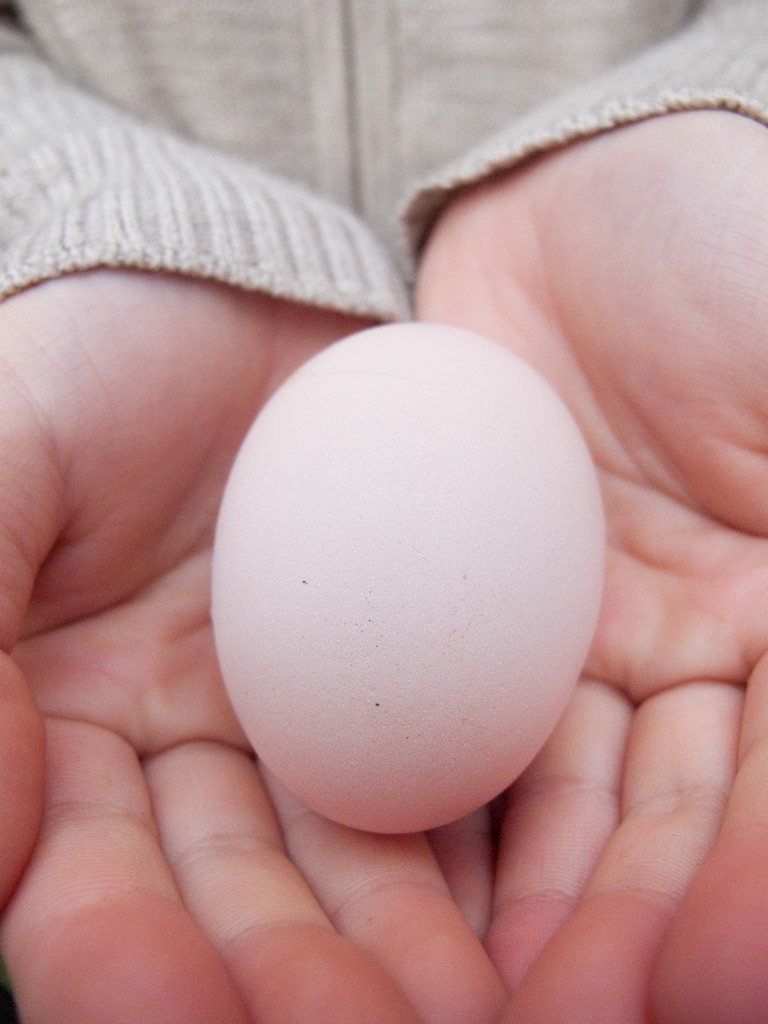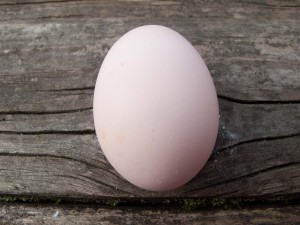Ever wonder what became of our cute little chicks? In a matter of weeks they turned into huge monster chickens. This is what they looked like when they first came:
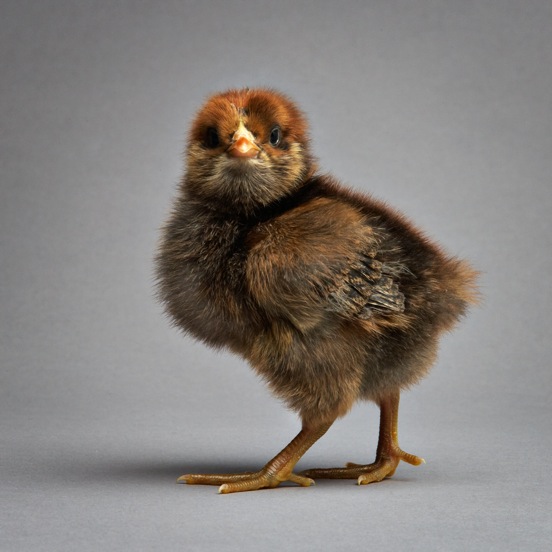
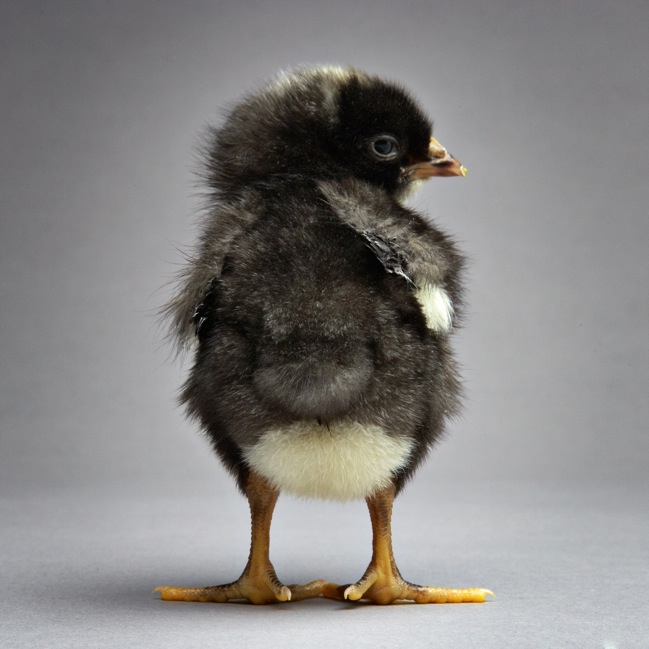
The first one is Edie and the second one is Razzamatazz (yes, I let a 7 year-old name her). Here they are now:

They are now integrated with the other girls, which has been a bit of a process (and is still going on). Any time a new chicken is introduced to a flock, there is a disturbance in the pecking order and the top hen has to re-establish her dominance. This translates to mean that there is usually an initial smack down. I read various accounts on how to add new hens to a flock and then came up with my own version. First of all, I waited until the chicks were a couple of months old and big enough that they wouldn’t be hurt when (and I mean when) the older ones beat them up.
In my set-up, I have the Eglu, which has a 9′ run attached to the coop. We built a 10’x10′ enclosure to extend the run. This enclosure isn’t predator proof, so we lock the door to the Eglu’s run at night to keep our gals safe at night. We have a wire dog crate, which is what we used in our office with the heat lamp when the girls were younger. We brought the crate into the extended run and wrapped it with layers of chicken wire to make it predator proof. This served as the coop for the chicks at night. During the day, we would let the chicks out of the crate into the extended run. The 2 older ones stayed in the Eglu’s run. I would then let both groups into the yard when I had time to spend in the yard. This got them used to one another and also gave the little ones places to hide when the older ones ran after them to peck them. I was surprised that Andie, my polish hen was the aggressor. Lulu just saves her aggression for me I guess. After several weeks of this, we decided that it was time for the final phase of the flock integration. We opened the door to the larger enclosure and let the two groups mingle. We kept the crate open as a place for the girls to hide. They spent a lot of time on top of it. But at night, we closed the crate and the chicks followed the older hens into the coop of the Eglu.
Here are some tips I can give on integrating a flock.
- You can do it as slowly or quickly as you want. I chose to do it more slowly in the hopes they would get used to each other and prevent the fighting. This didn’t really happen.
- Provide several food and water stations. The established flock has a tendency to guard the food from the newcomers. You want to make sure the new hens are getting enough to eat and drink.
- Provide some sort of place for the newcomers to escape from the older ones. Ours used to fly on top of the dog crate and hang out there. That’s where we put the chick food. We took that out and now have a perch in the extended run. The older hens don’t seem interested in this at all, so it is the place where the young ones can go to escape from the old meanies.
- Expect some pecking while they establish their pecking order, but keep an eye out to make sure nobody is getting too hurt or wounded. Andie mostly would sneak up behind one of the chicks and peck them soundly on the tush. They now just try to avoid her as much as possible.
So, I don’t have a love affair between the new and the old hens, but they co-habitate and nobody is getting hurt anymore. I think that’s about the best I could expect.
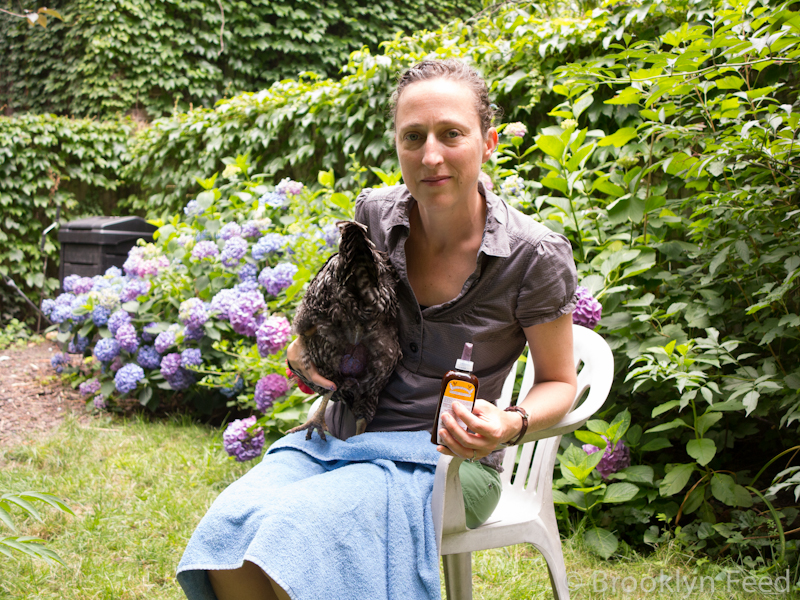 A while ago I noticed that my hen Razzy was missing feathers under her vent. I chalked it up to chicken mites, and gave them all a treatment. That was in the spring, and she still has a bald bottom.
A while ago I noticed that my hen Razzy was missing feathers under her vent. I chalked it up to chicken mites, and gave them all a treatment. That was in the spring, and she still has a bald bottom.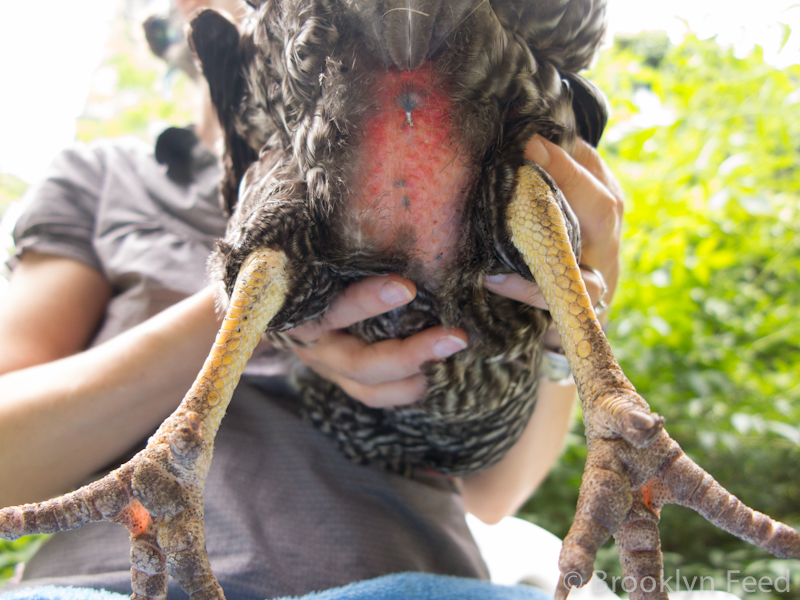 Chickens are attracted to the color red, so her poor red bottom was attracting the others to peck her. I’m not entirely sure where the feather picking started. She might have lost feathers there due to mites. Or the others may have just started pecking at her. Ultimately it doesn’t matter now, because they are drawn to the bright red of her poor, little tush.
Chickens are attracted to the color red, so her poor red bottom was attracting the others to peck her. I’m not entirely sure where the feather picking started. She might have lost feathers there due to mites. Or the others may have just started pecking at her. Ultimately it doesn’t matter now, because they are drawn to the bright red of her poor, little tush.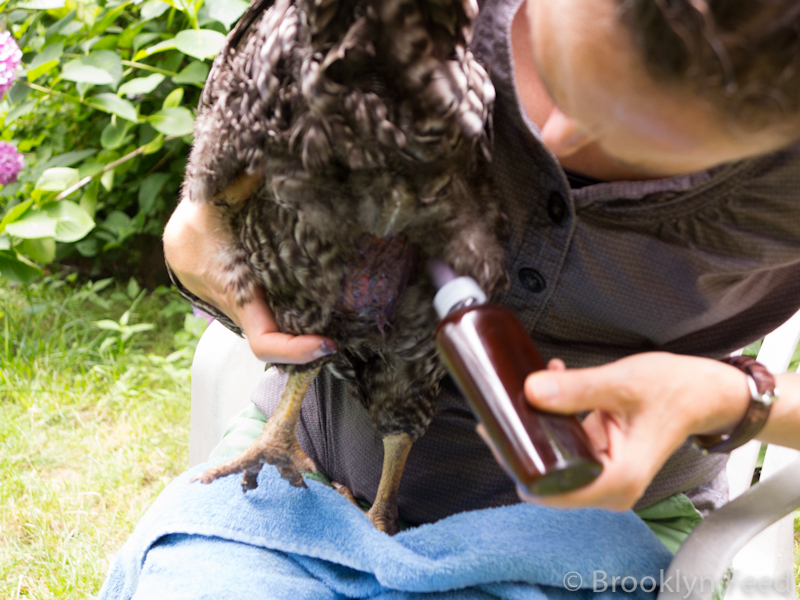 I did some reading and found a product called Pick-No-More by Rooster Booster. What I liked about this product is that it is a natural product. It has a scent that chickens don’t like, which deters them from pecking. There is also calendula, which helps soothe her poor, pecked bottom. You use the applicator to smooth the cream onto the affected area. It is a dark purplish gray, which blends into her feathers particularly well.
I did some reading and found a product called Pick-No-More by Rooster Booster. What I liked about this product is that it is a natural product. It has a scent that chickens don’t like, which deters them from pecking. There is also calendula, which helps soothe her poor, pecked bottom. You use the applicator to smooth the cream onto the affected area. It is a dark purplish gray, which blends into her feathers particularly well.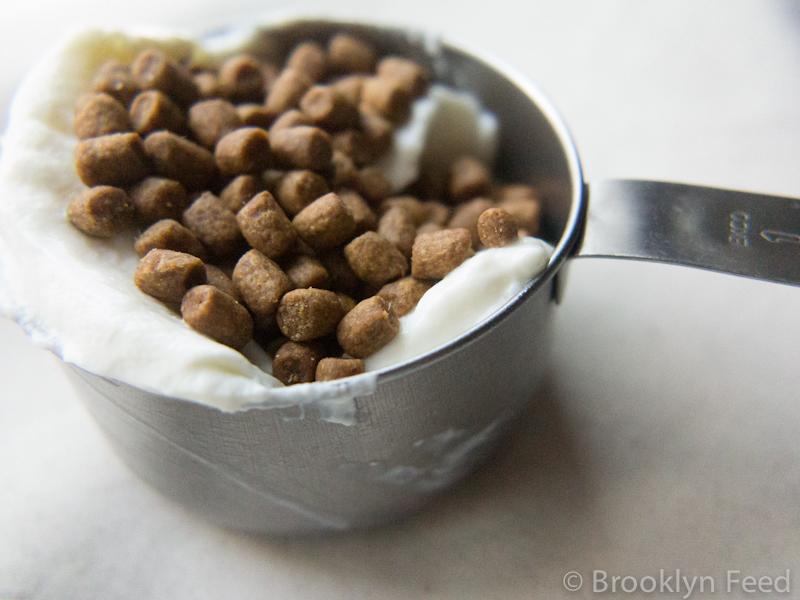 In addition to treating the bald patch, I am trying to boost the protein in their diet. Feather picking can be caused by boredom or a protein deficiency. My girls have a pretty large area to roam, so I don’t think it’s the boredom. I feed them a lot of kitchen scraps, so that could have led to a decrease in protein. I am giving them a mixture of plain yogurt with some dry cat food. Cat food works well because it has a very high percentage of protein. It’s hilarious to watch them eat the yogurt. Particularly my polish hen, who’s head feathers act like a kind of mop in the yogurt dish.
In addition to treating the bald patch, I am trying to boost the protein in their diet. Feather picking can be caused by boredom or a protein deficiency. My girls have a pretty large area to roam, so I don’t think it’s the boredom. I feed them a lot of kitchen scraps, so that could have led to a decrease in protein. I am giving them a mixture of plain yogurt with some dry cat food. Cat food works well because it has a very high percentage of protein. It’s hilarious to watch them eat the yogurt. Particularly my polish hen, who’s head feathers act like a kind of mop in the yogurt dish.
